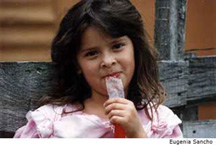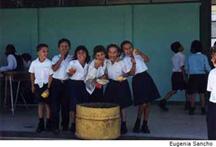|
||||||||||||
|
||||||||||||
Literacy rate: 96% (2003 est.) Education The last 20 years have seen a significant boosts to educational standards. Since the 70s the country has invested more than 28% of the national budget on primary and secondary education. President Figueres elected in 1994, advocates a computer in each of the nation’s 4000 schools, plus obligatory English classes, probably with the technological and tourist industries boom of recent years. Libraries are the only way for adults in rural areas to continue education beyond six grade. The country, with approximately 100 libraries, has a desperate need for books and for funds to support the hundreds of additional libraries that the country needs. Elementary and High schools are to be found in every community. Students are not required to pay for assistance, a nominal charge of around $20 per year applies. Elementary school has 6 year levels, where as high school has 5 year levels. Each is divided in two cycles, and upon completion of each cycle, students are required to pass tests on all subjects studied during those years. The most notorious of these tests are the Bachillerato Tests, which are required to get the high school diploma needed for admission to Universities. Although the country lacked a university until 1940, Costa Rica now boasts four state-funded universities and a score of small private ones, whose number has increased dramatically in the last decade, due to the difficulty of being admitted to state-funded, more prestigious universities. Opportunities abound for adults to earn the primary or secondary diplomas they failed to gain as children. The University of Costa Rica (UCR), the largest and oldest university, enrolls some 35,000 students, mostly on scholarships, but even paying full tuition is not hard as it rarely surpasses $200 a semester. The main campus is in the northeastern San Jose community of San Pedro but the UCR also has regional centers in Alajuela, Turrialba, Puntarenas and Cartago. The National University in Heredia, offers a variety of liberal arts, sciences, and professional studies to 13,000 students . Cartago’s Technical Institute of Costa Rica (ITCR) specializes in science and technology, and seeks to train people for agriculture, industry and mining. And the State Correspondence University, founded in 1978, is modeled after the United Kingdom’s Open University and has 32 regional centers offering 15 degree courses in health, education, business administration, and the liberal arts. In addition there are many private institutions like, the Autonomous University of Central America, the University for Peace, sponsored by the United Nations offering a master’s degree in communications for Peace. by Infocostarica Staff |
||||||||||||









